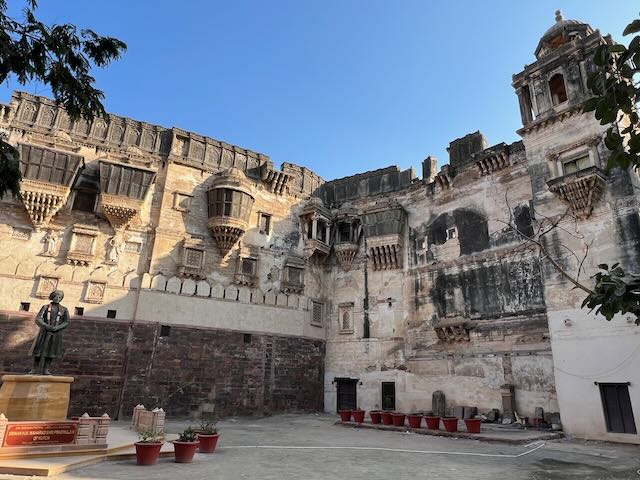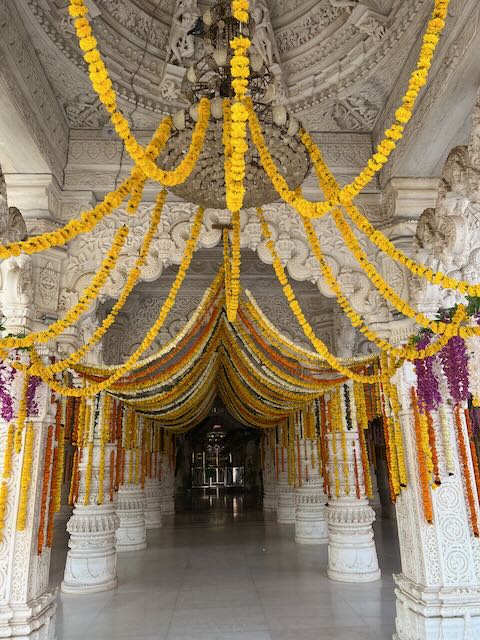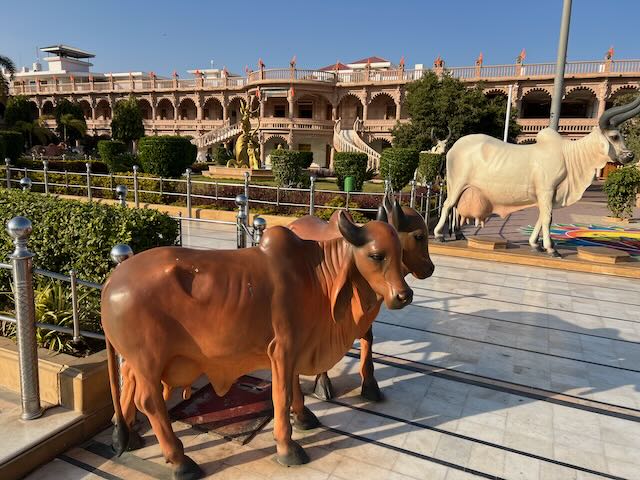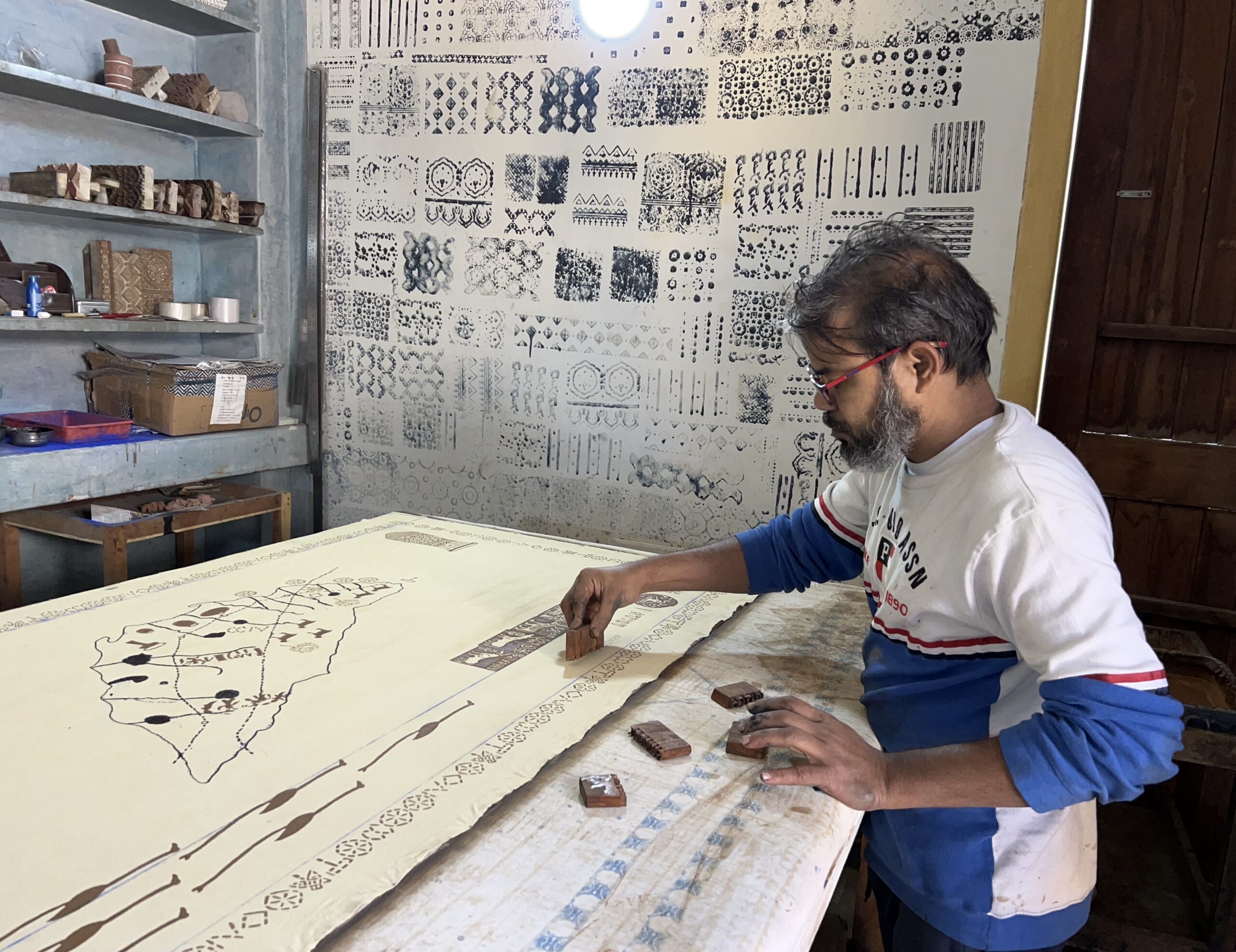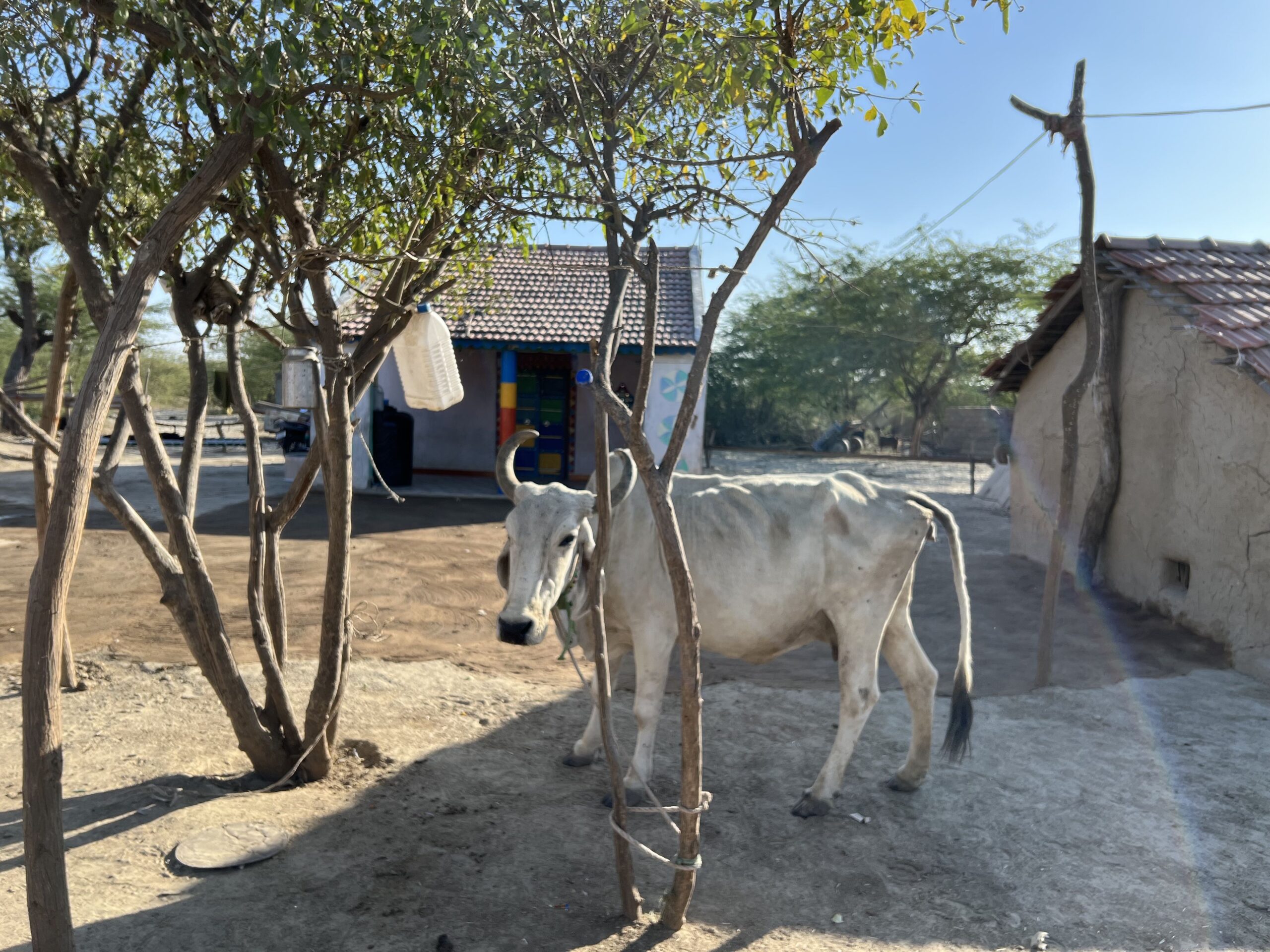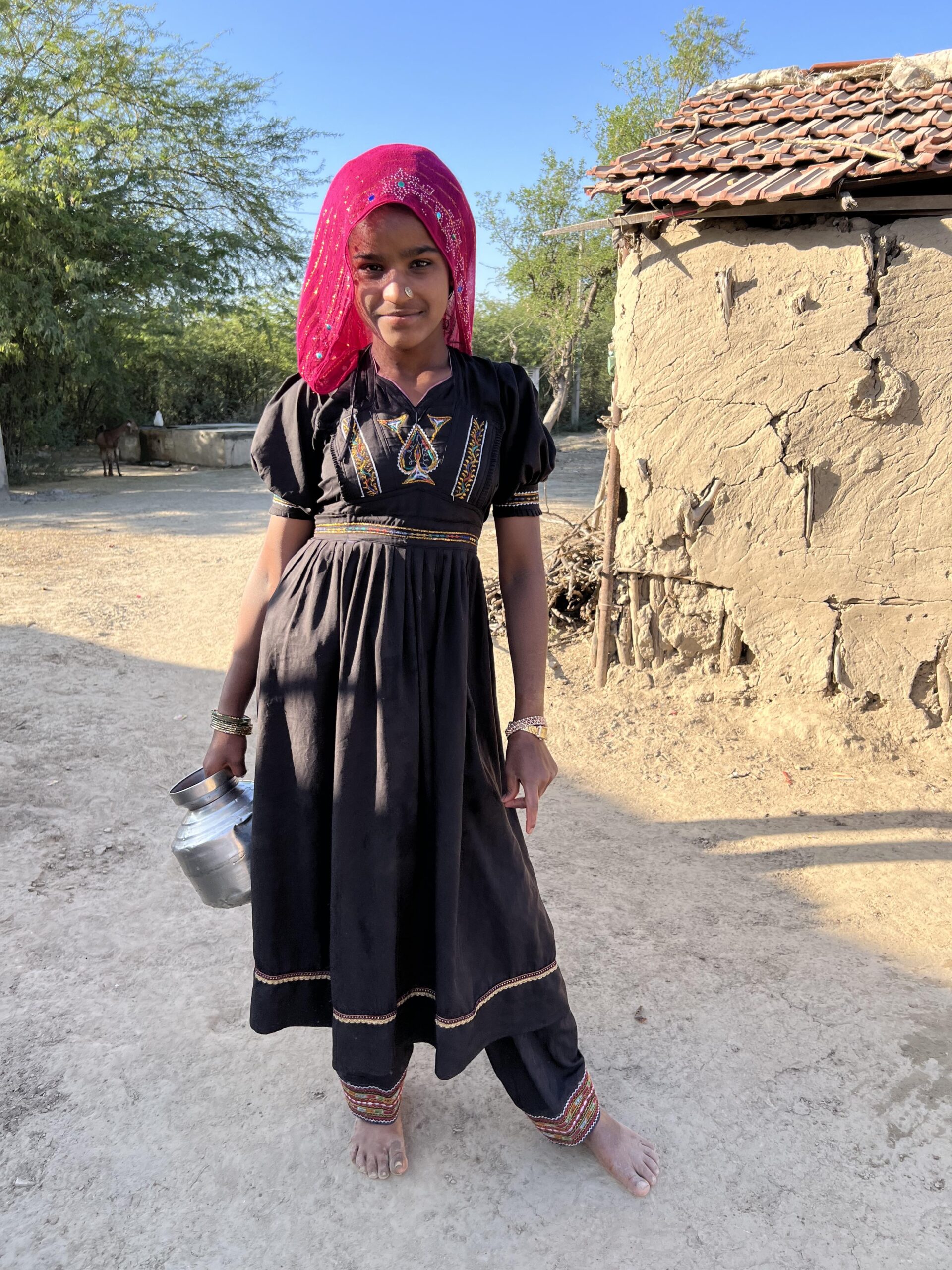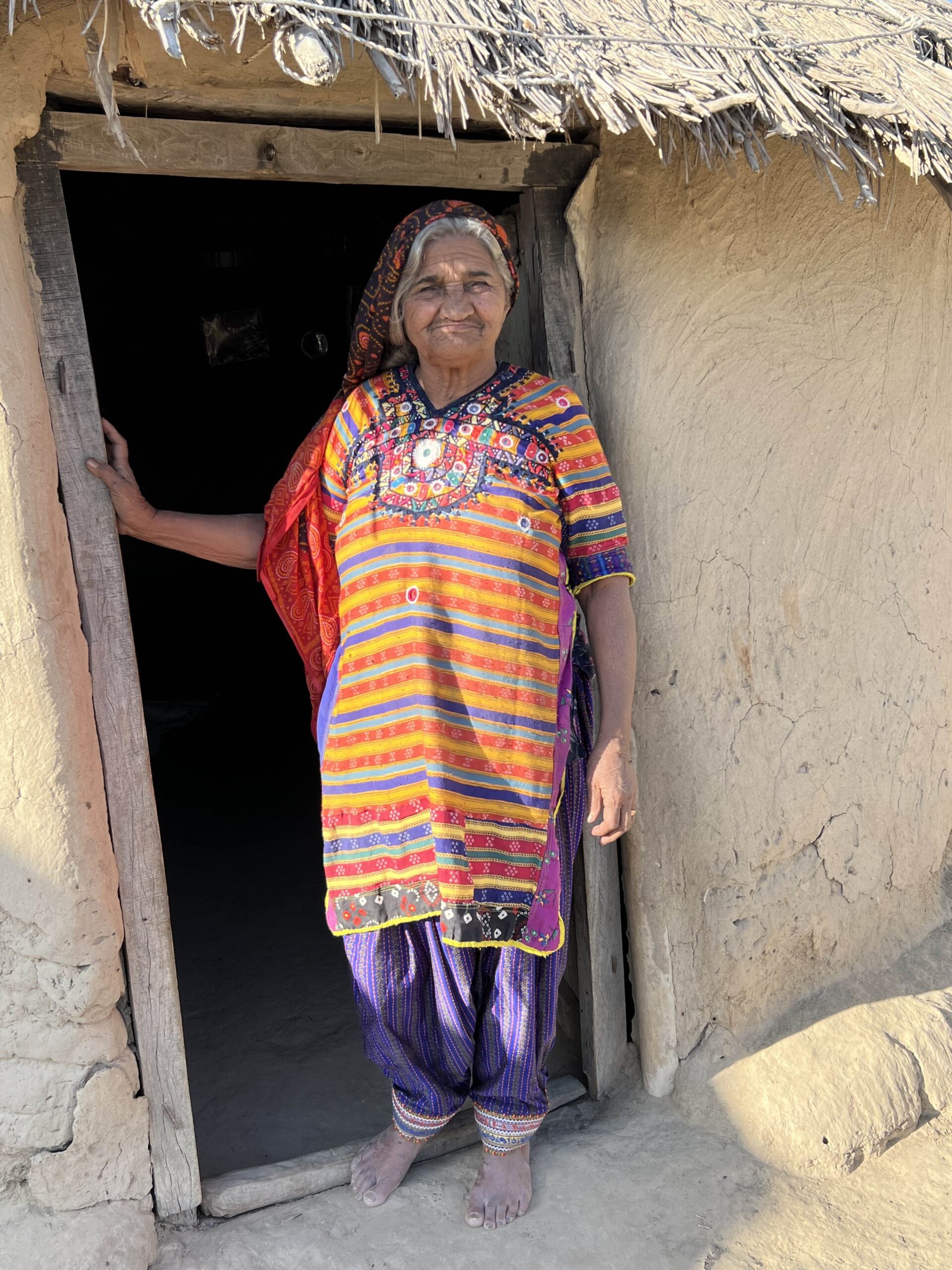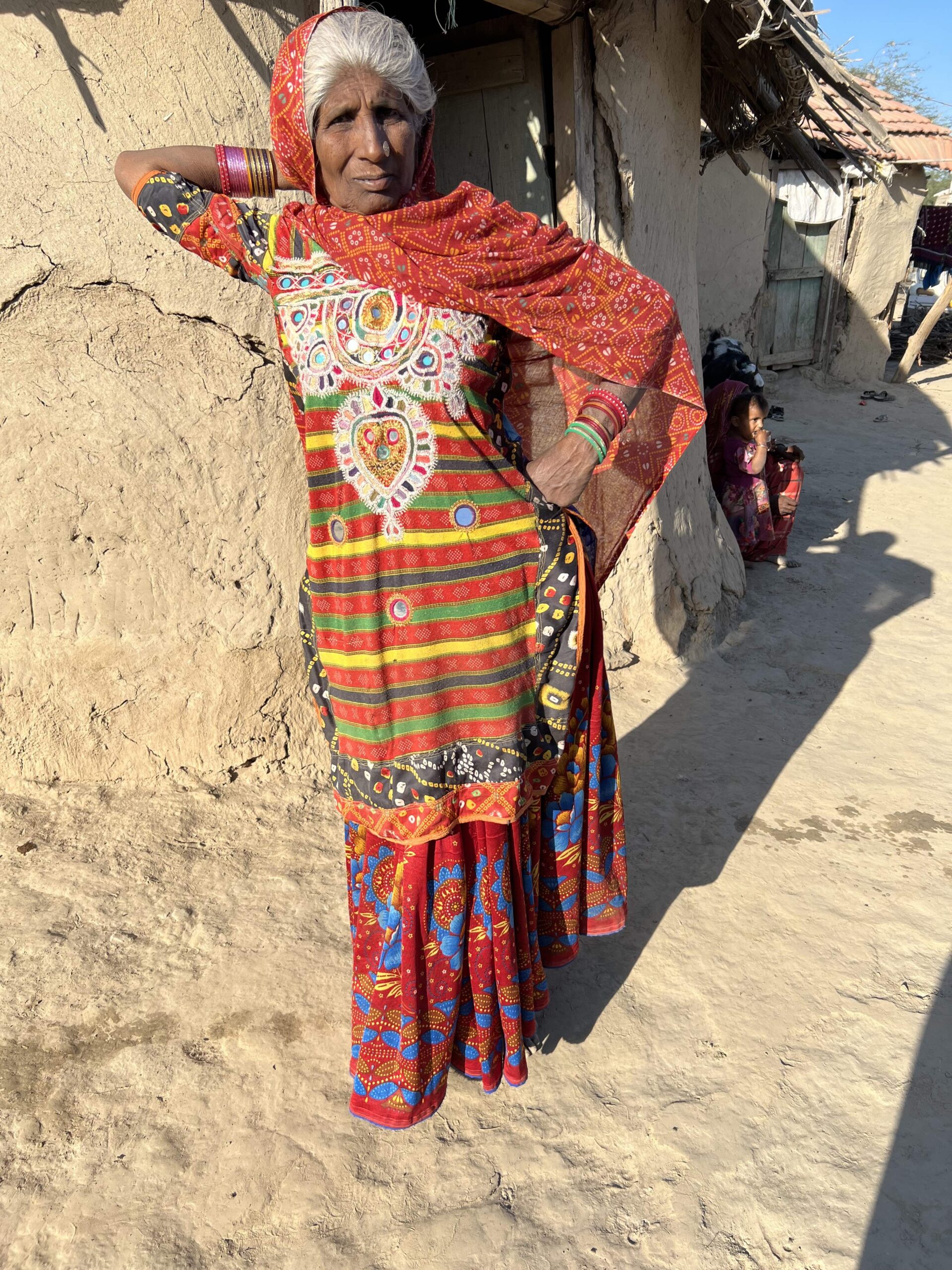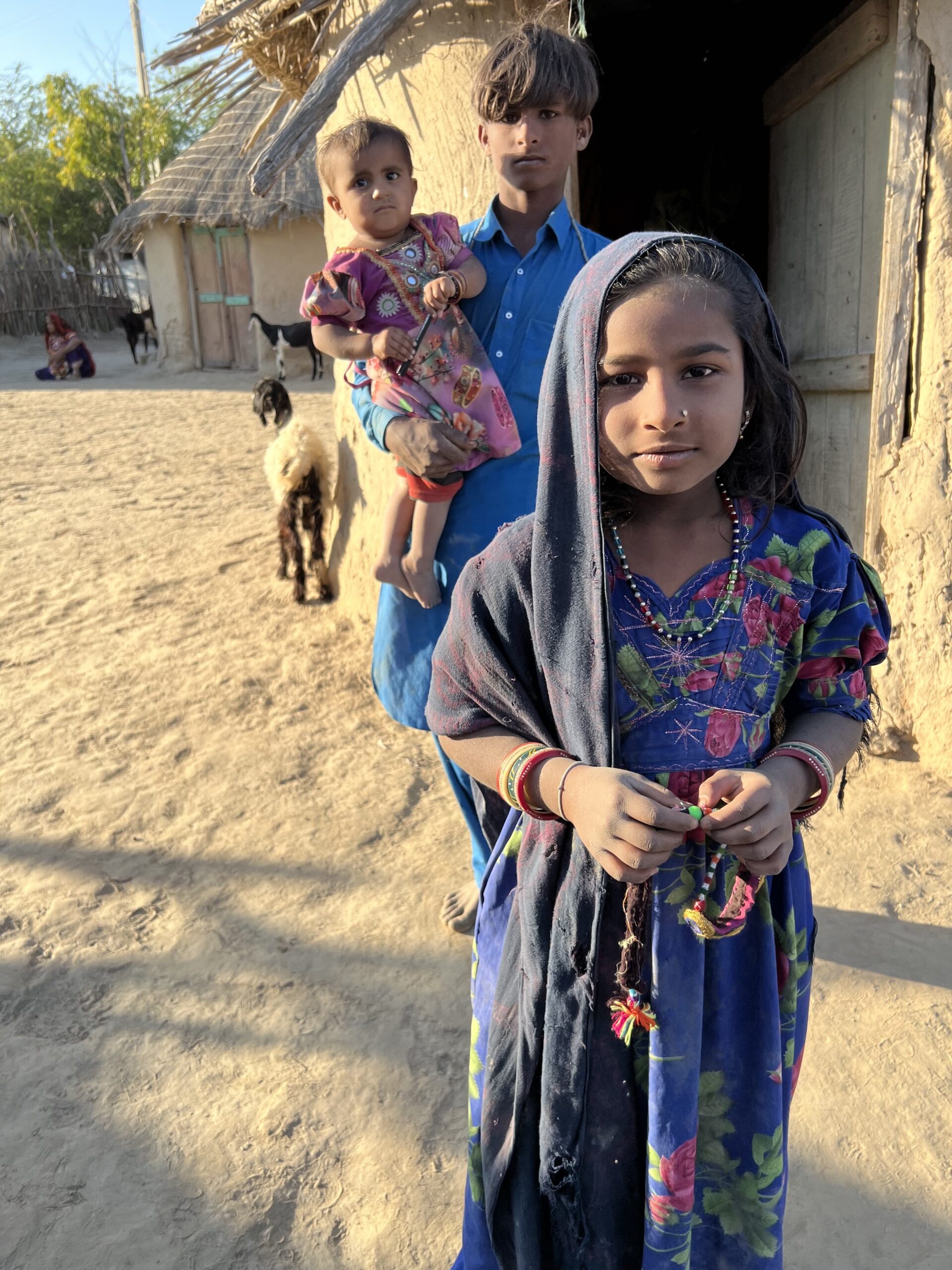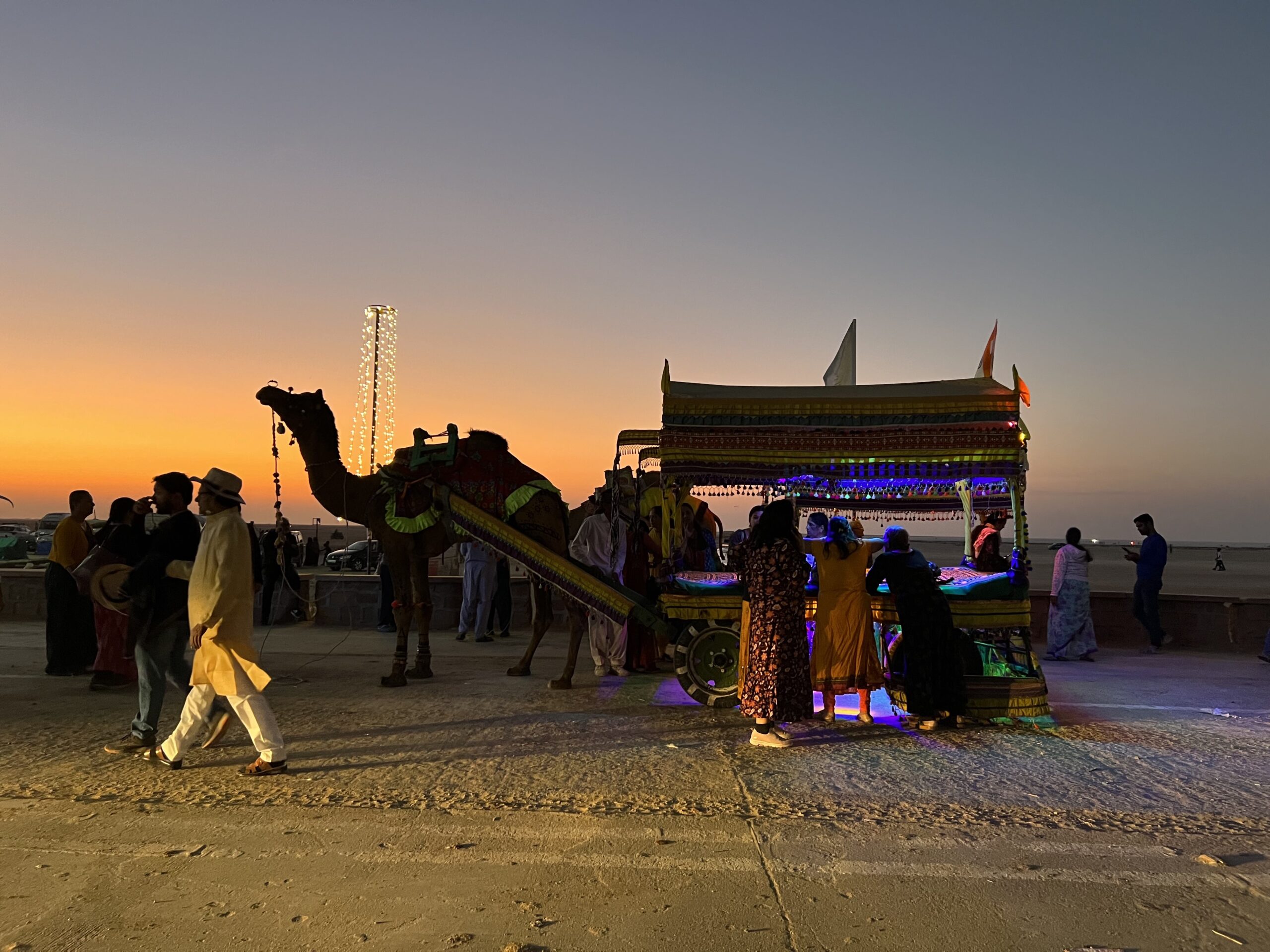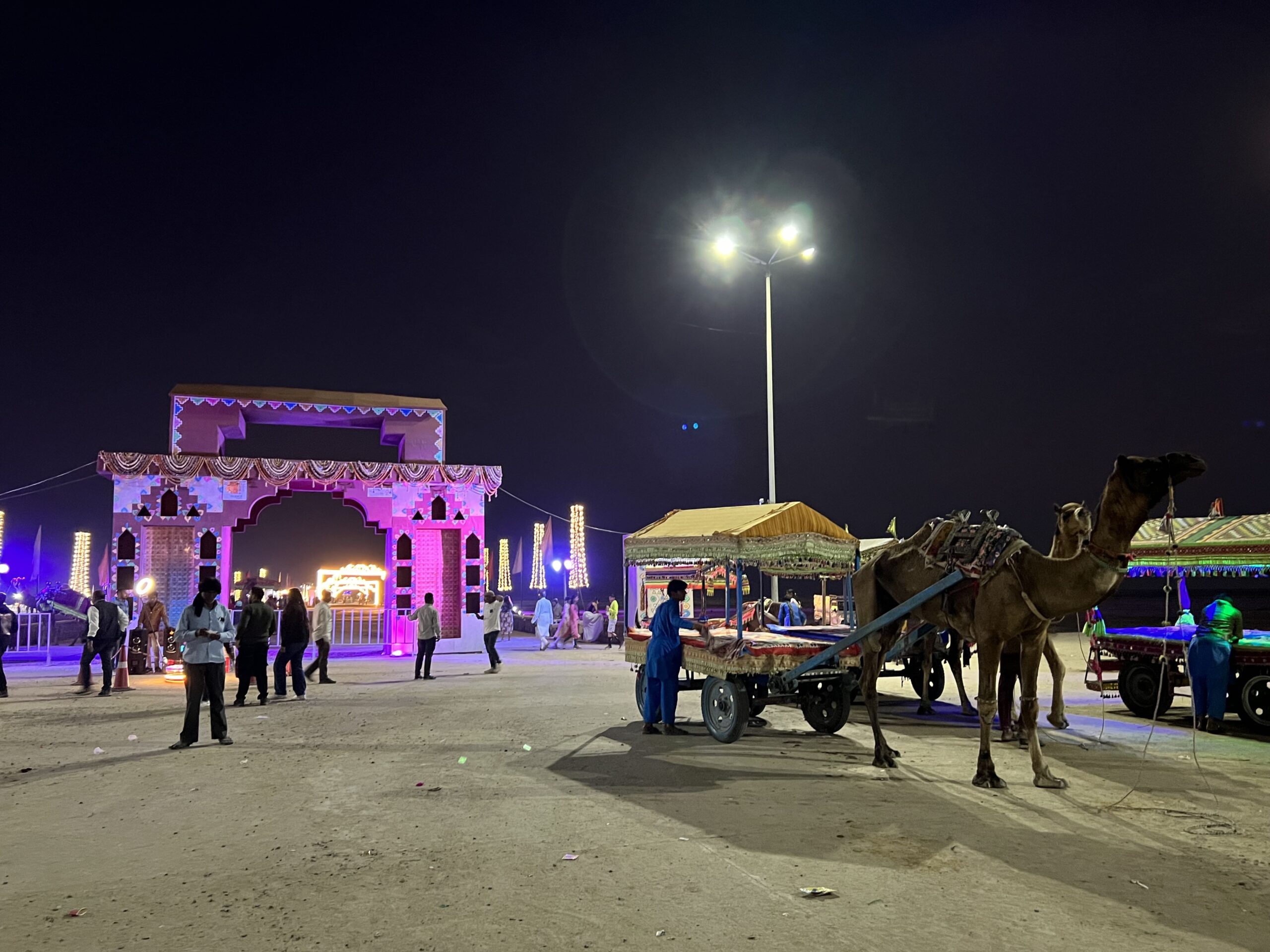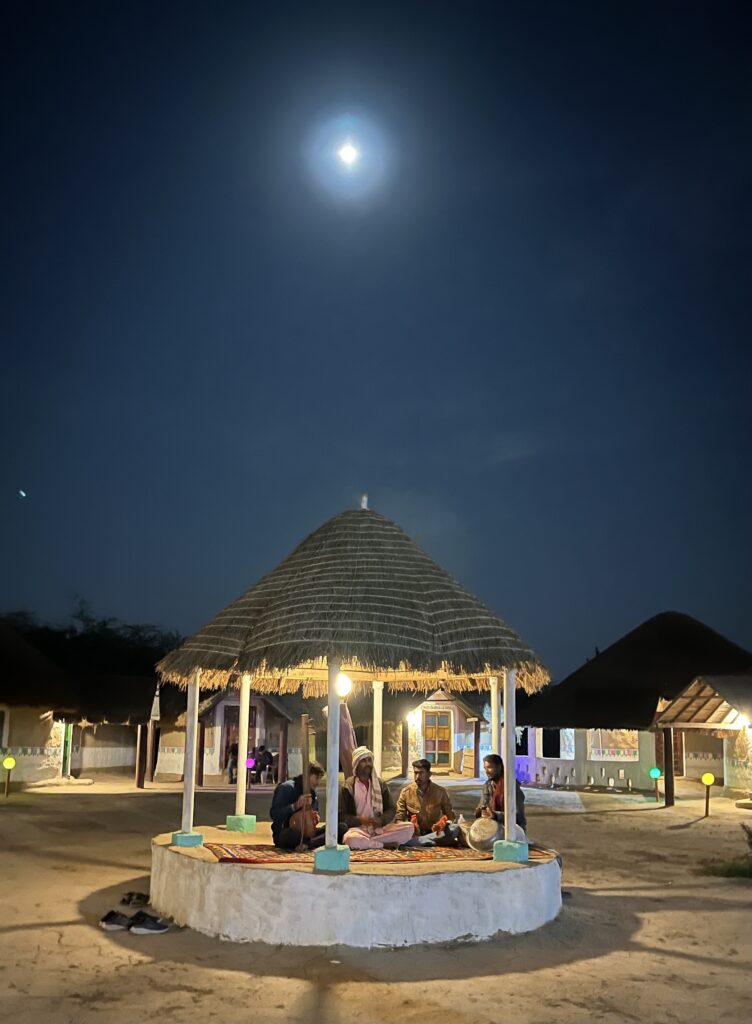January 23
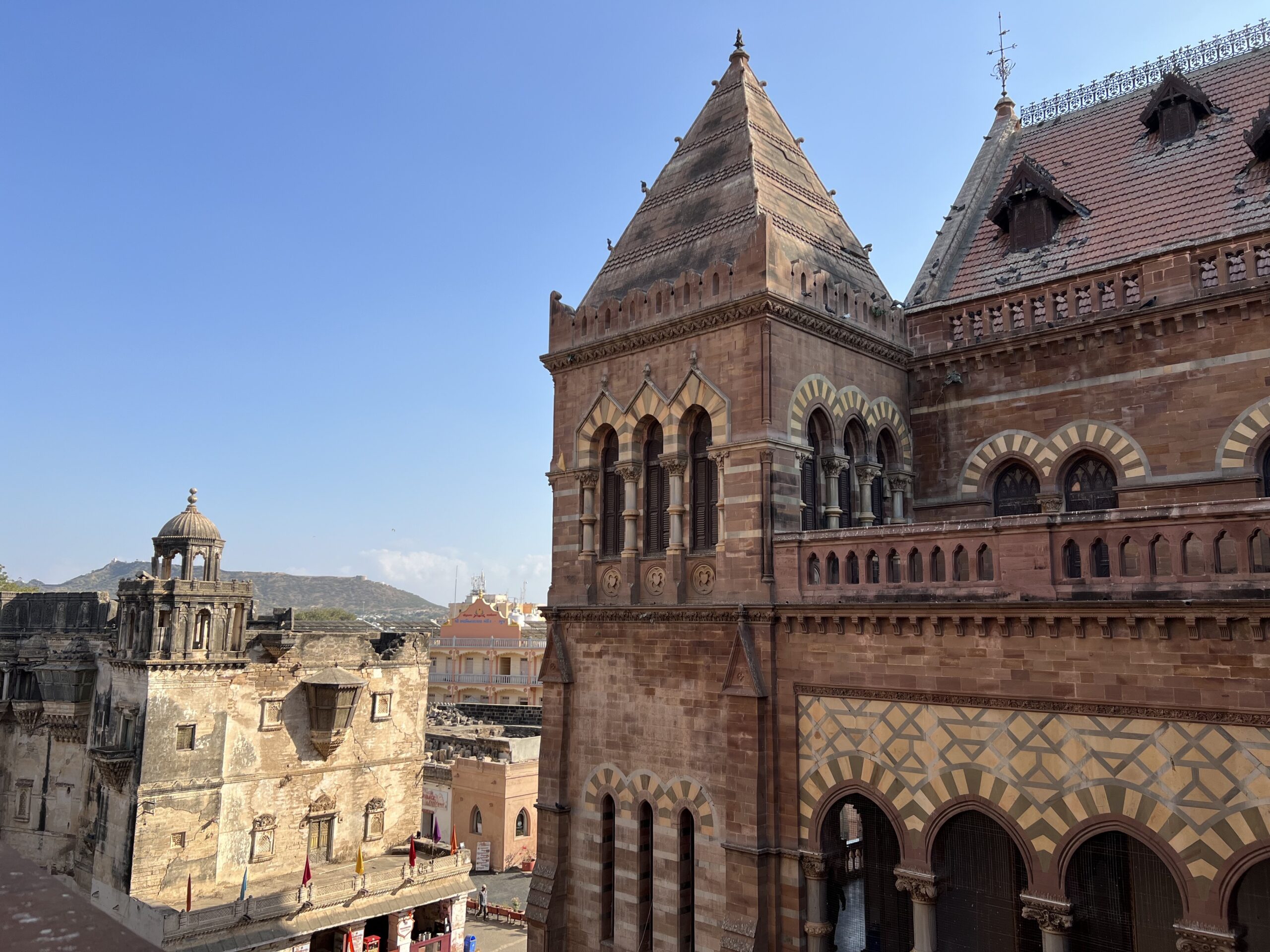
India is not for the unsteady or infirm which make me wonder how many more visits to new places here I will be able to make. Some things have changed little in the last 50+ years but my body is not the same: the roads and sidewalks in town are very broken up and vary between pavement and dirt, the steps are very uneven in size and shape and there are no railings anywhere even for new concrete stairs. On the other hand, several local people have mentioned to me that P.M. Modi has done a wonderful job in constructing and improving highways all over India and it is true that this rural part of Gujarat has good paved roads between villages that probably did not exist a few years ago. Authoritarian figures can quickly push through projects, good or bad.
This is a day of travel, without the assistance of a guide, from Gondal to Bhuj, the main town in the Rann (meaning “desert”) of the Kutch area. Bhuj was badly damaged in 2001 with a 6.9 Richter scale earthquake and 20,000 dead. Much has been rebuilt, including an Earthquake Museum, and there are city sections of new glass and shiny up-scale stores but most of the town remains a quiet backwater with not only centuries but millennia of history. There is a massive Indian military establishment as big as the whole town of Bhuj right outside its perimeter built during the 1971 Indo-Pakistan war as well as a large prison. Kutch is the Western edge of India with miles of uninhabited desert until the Pakistan border.
The Pragmahal Palace in Bhuj wss built in 1869 by the local ruler in Italian Baroque Revival style, complete with highly decorated capitols on top of columns and a high clock tower. The interior decor is an example of Victorian excess imported into a foreign culture: ornate chandeliers, velvet couches and chairs, carved nymphs on pedestals. Impressive but not aesthetically pleasing.
We see across the street an older and more interesting building and understand it was severely damaged by the earthquake and can not be entered. But without a guide to tell us where to go, we miss visiting the interior of the Aina Mahal an older royal home from the 1700’s and the set of many Bollywood movies.
We are also directed to another massive Swami Narayana temple, this one with orange flags blowing in the wind to continue the celebration of yesterday’s Rama Day, decorated with copious flower garlands festooning the white marble space.
Gayathri is working as translator for us and doing a wonderful job. Luckily she is very outgoing and is also meeting people along the way and seems to enjoy it all. I commented about the openness of various women she is talking to and who interact with her and she indicated this is common in India for women from all regions. Very different from the distance of American women to unknown people in new places. It is a pleasure being with her and having her with us — and right now, very very useful!
January 24
The next morning we meet our new guide, a young man from a local family, whose English pronunciation is a little hard for me to understand but who is very personable. This area is the heart of the arts and crafts world of Gujaratd and we begin by visiting the local wood block printer who is the 9th generation of a family of craftsman. His whole community had to move after the 2001 earthquake as the river that was essential for their work disappeared. Ginny and I feel obligated to buy something
The Living and Learning Design Center (LLDC) nearby was a marvel – built in 2016 with the most modern curatorship and display techniques, it displayed all the embroidery styles of the Kutch area. Ginny remarked that we have now seen the gamut of textile displays in India, from the poorest at the Watson Museum to the highest level here at LLDC. We are scheduled to visit the world-known Calico Museum when we return to Ahmedabad and wonder what we will find there.
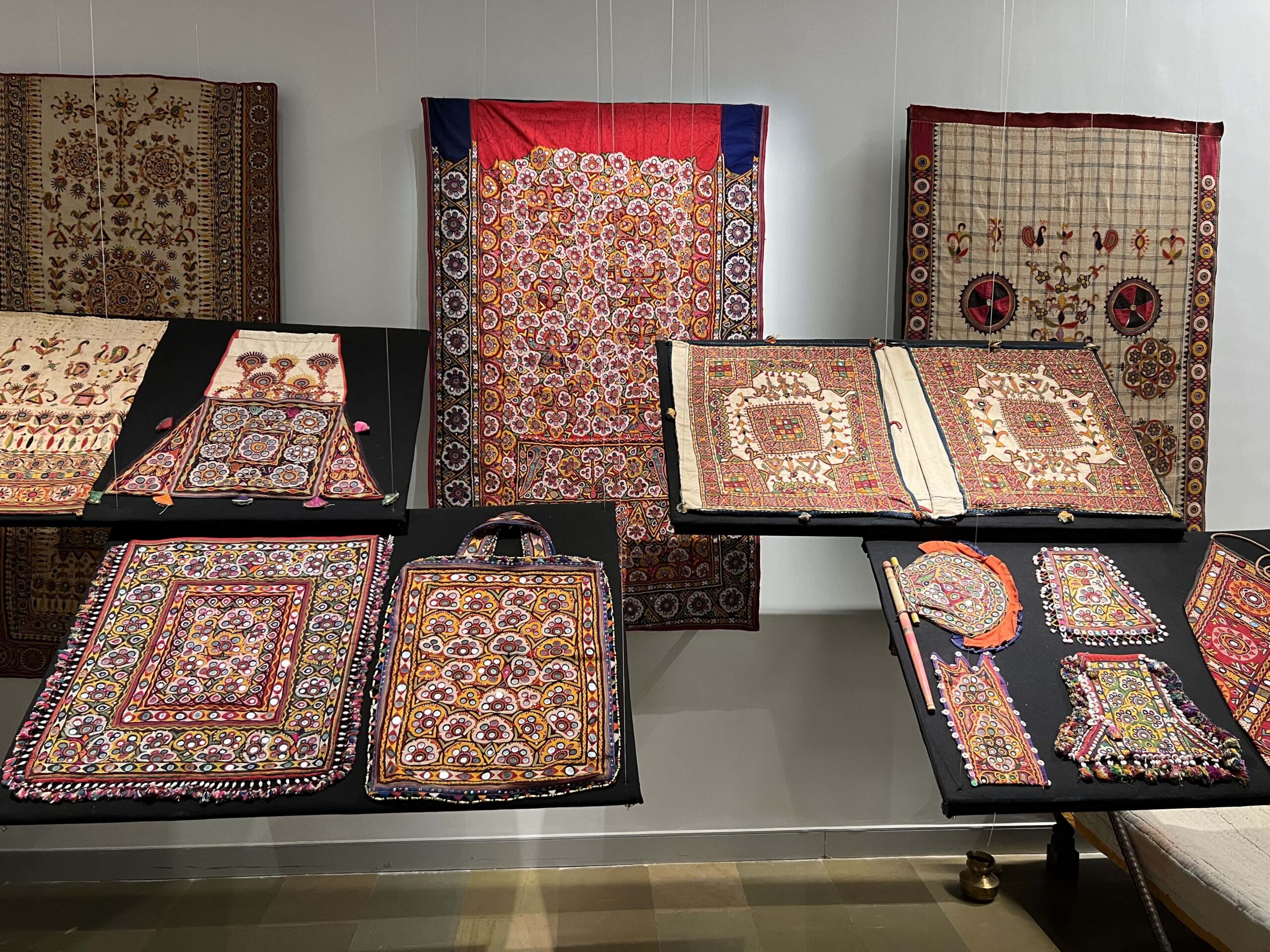
Our docent Sagar was a young guy who immediately bonded with our guide — and we learned that Sagar was recently married at age 22 to a woman whom his parents had chosen for him and whom he met once. Our guide replied that he had rejected 6 women so far but his mother was pushing him to get married and will not allow him to go abroad for his Masters Degree until he has chosen a mate so he will be sure to come back. Life goes on in old and new forms.

We also visited a very-high end tie-dye workshop and it turns out Ginny had met the owner of this business at the Santa Fe Folk Arts Festival a few years ago! Our degrees of separation get smaller and smaller. We are shown the outstanding fine detailed craftsmanship utilizing very old techniques. Today, the master draws the design on a transparent sheet which is then transmitted with all materials to the women in the local villages who do the initial tie work (requiring very nimble fingers and excellent eyesight) which is then returned to the shop for the first level of dying at the workshop. This is repeated with the women doing all the tie work until the fabric is completed. Painstaking labor.

Our day was complicated because after lunch, our guide called a friend with a 4-Wheel drive car and we piled in (Bill, the guide and driver squashed together in front and the 3 ladies in the back) to be taken on a deserted bumpy dusty road to a Pathan village.
These are a group of people who were originally 1 or 2 generations ago from Afghanistan/Pakistan. Their village is a collection of mud huts, drawing water from a well. Our guide pointed out that the government built several outhouses for them which have been turned into storage facilities as they prefer the scraggly woods. Goats big and small roam freely among the huts and appear part of the family. All the women are beautifully dressed in their self-embroidered finery, which they must wear at all times as we were not expected, They lay out on the ground all their individual wares for sale and we wander among beautifully embroidered dress tops and cloth pieces and a quilt or two. Ginny and I feel obligated to buy something.
When I was putting together this itinerary, I did research and found out that the annual Rann Utsav, a festival of Gujarat music and crafts, was happening when we would be in Gujarat and tried to figure out how we could attend part of it. It is a recent event created to bring domestic tourists and their money into the area and has attracted thousands of Indian tourists for the last few years. I decided the crowds and commercial nature of the event were not for us. And yet suddenly, on our scheduled trip to the White Rann, we find ourself in the middle of a great outdoor circus which is the Rann Utsav — lit up arches and tents, lines of stalls selling food and souvenirs, an outdoor theater for music events and many people. Our van stops as we come to a collection of old wooden carts pulled by either small decorated horses or large decorated camels.
Our guide knows a horse cart driver who is about 13 years old, comes from the Pathan village we had visited earlier in the day — and was recently married. Off we go sitting on mats on either side of the wooden-wheeled cart as we moved under electric arches down a recently constructed causeway that ends in a tower with lights and most likely sound projection. On one side is a sea of white that looks to us used to snow country like a sheet of ice or perhaps frozen sleet but is in fact a layer of salt left when the waters that flood this plain every year evaporate. People are walking in groups out onto the salt flat to watch the setting sun. I estimated hundreds but my trip companions say, no, thousands.
We passed security posts as we are at the furthest edge of the country and I asked our guide what there was at the border and he said there is no physical border, the salt flats just keep going into Pakistan. I guess anyone who can manage to walk across in either direction is welcome. Once the sun sets, we head to our cart and the race of camel and horse carts back to where we left our vehicle. Now, at dark, with many lights, it is even more of a happy crowded carnival atmosphere but one we were not expecting and has greatly surprised us.
Outside our round bunga-style rooms, based on traditional local huts and decorated with mirror work and village art, there is a campfire with string beds to sit on around it and an open-air gazebo with a group of tribal male musicians playing instruments and singing folk songs. And with those stringed sounds and duet of voices, I fall asleep.


